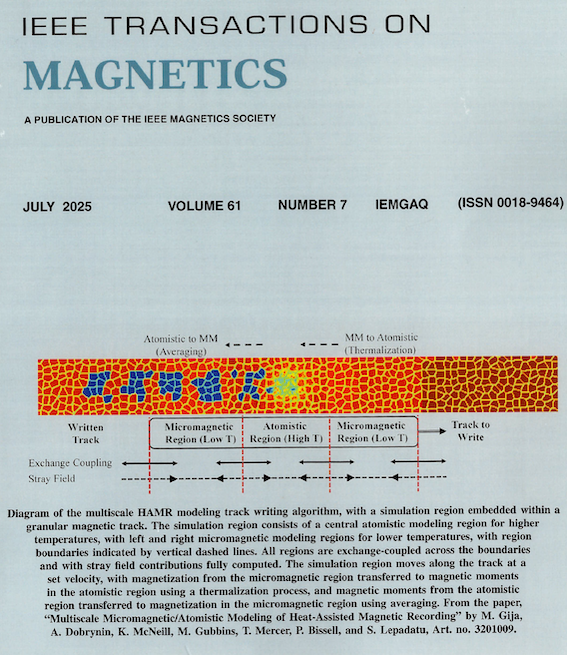
Front cover of the recently published Issue 7, (Vol 61), of the IEEE Transactions on Magnetics:
The image shows the simulated recording of a track on the magnetic layer of a Hard Disk Drive (HDD). Current HDD technology is reaching its physical limit in terms of the amount of data that can be stored on the disk (the data density, known as the Areal Density per a given area). The new technology uses a laser to heat up and cool down the area of each digital bit within a nanosecond (the more familiar millisecond, ms, is a thousandth of a second. A nanosecond is a thousandth of a thousandth of a ms). This allows the magnetic layer to have its magnetisation flipped from one direction (say a digital ‘1’) to the opposite direction (a digital zero). Called Heat Assisted Magnetic Recording (HAMR), the article reports on the new computational method required to take into account the heating effect and thereby allow scientists and engineers to understand the physics underpinning the process and give insight into improving it further.
The work is co-sponsored with Seagate Technology and the University’s Doctoral Training Centre. Seagate are the first to commercialise HAMR HDDs, with more details available here: https://www.seagate.com/gb/en/innovation/hamr/. They are co-authors on the article alongside the physicists in the JHI’s Magnetic Materials Research Group, namely the Project Lead, Dr. Serban Lepadatu, PhD student, Mohammed Gija, Dr. Tim Mercer and Prof. Phil Bissell. Dr. Lepadatu developed the package that was used to carry out the simulations, which is open source (and so freely available) at: http://www.boris-spintronics.uk/
